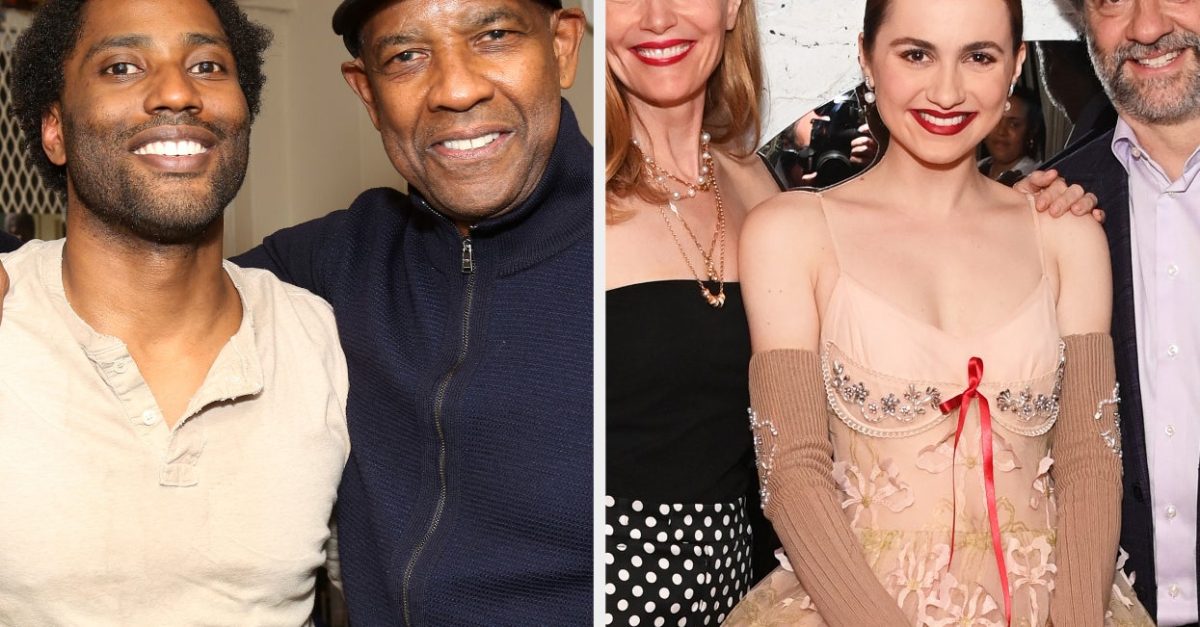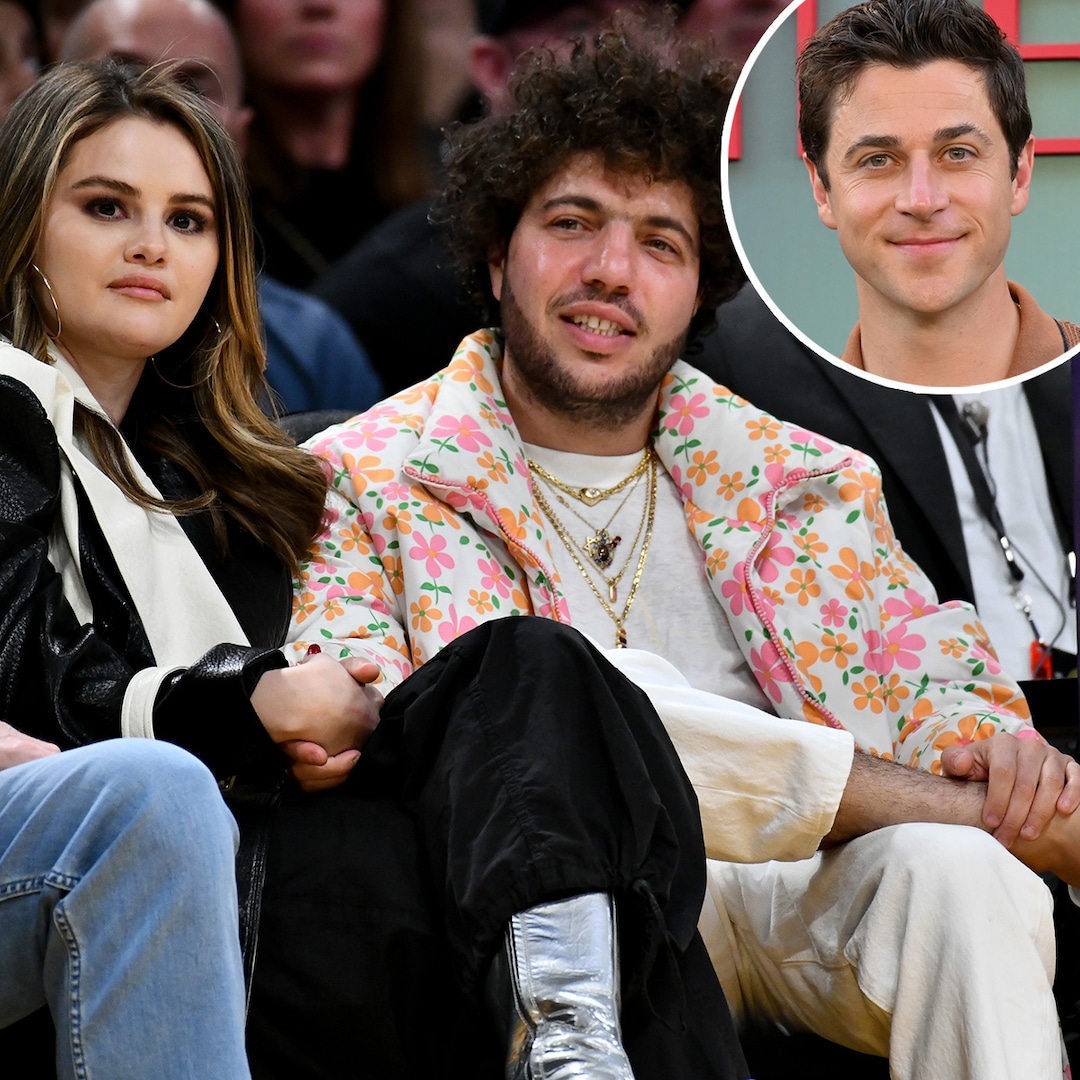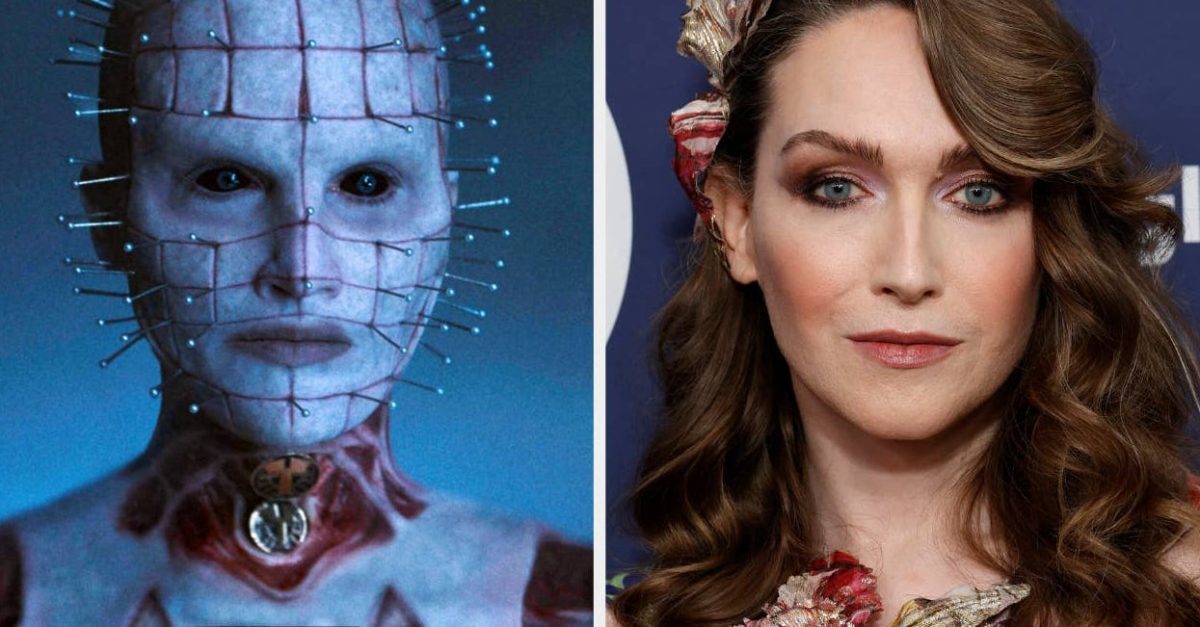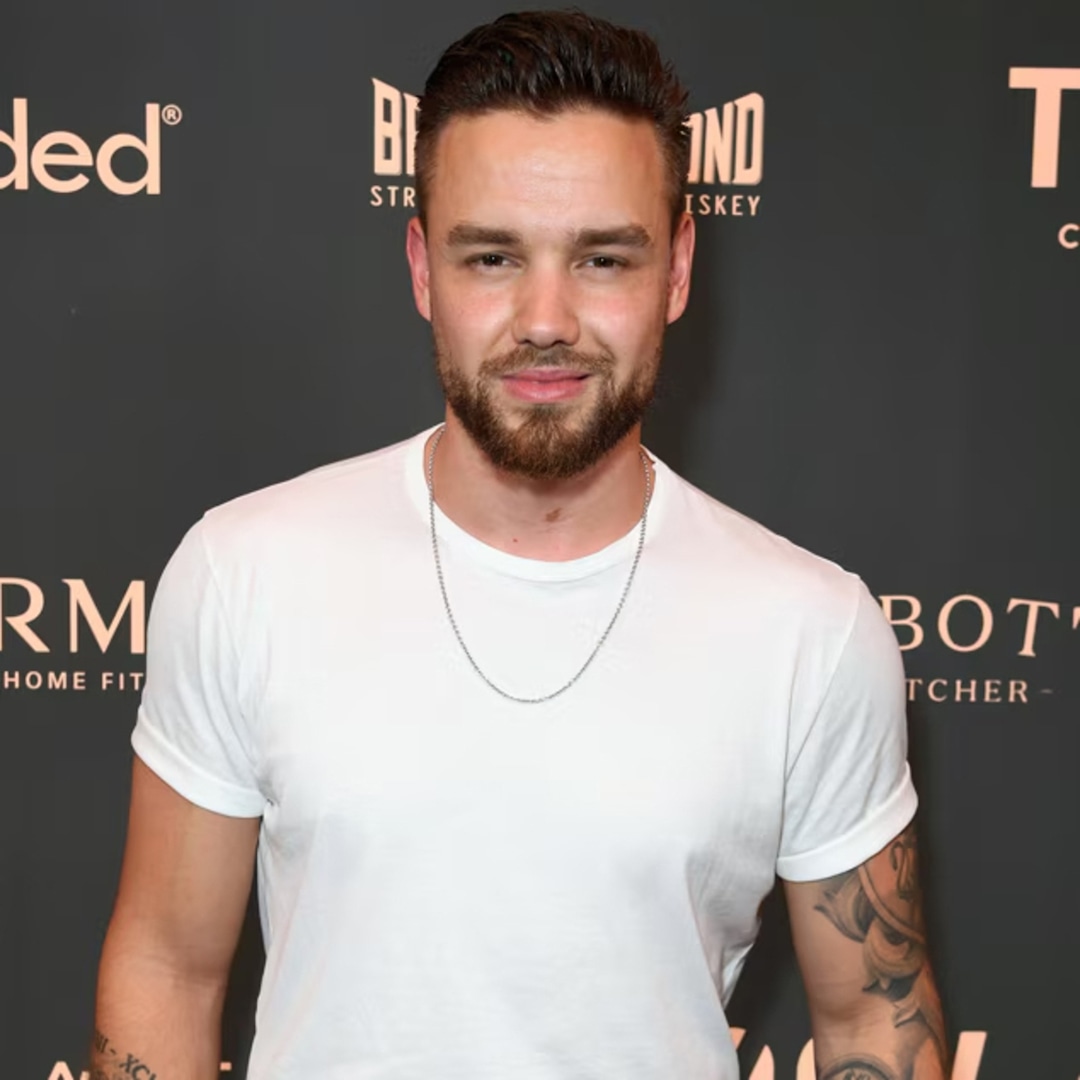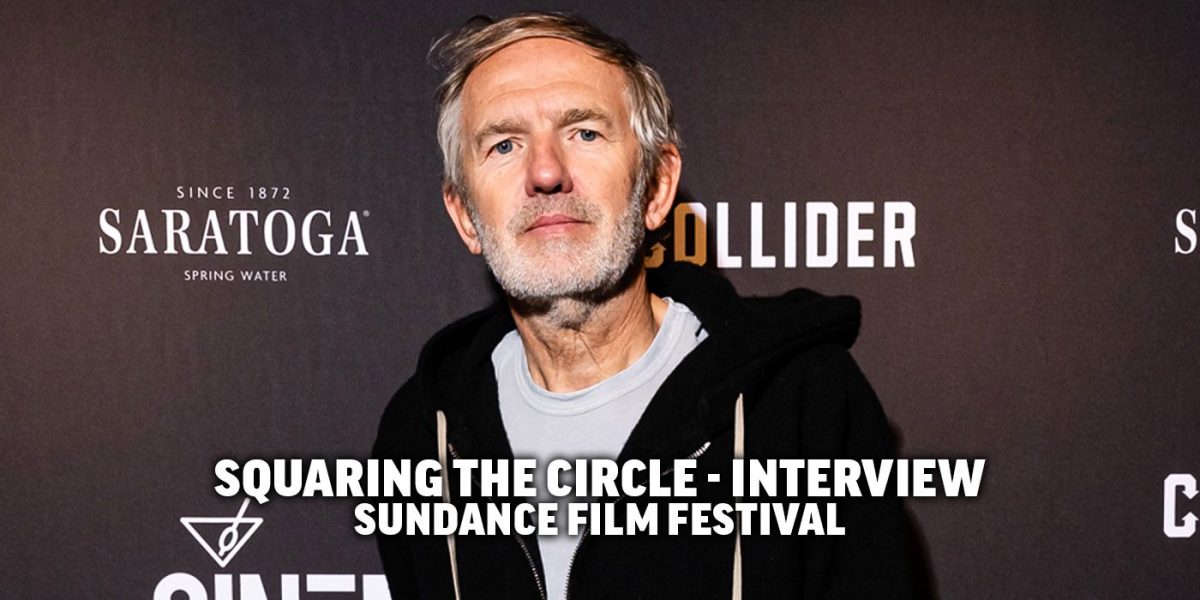
Anton Corbijn on Squaring the Circle, Hipgnosis, Album Covers & Kurt Cobain
Jan 29, 2023
From Dutch director and photographer, Anton Corbijn, Squaring the Circle (The Story of Hipgnosis) tells the history behind Storm Thorgerson and Aubrey “Po” Powell, the creative minds behind one of the most iconic design studios in musical history, Hipgnosis. No stranger to the musical frontier, Corbijn has worked with numerous influential artists, namely Depeche Mode, U2, The Killers, and many others, as well as directed a number of notable music videos, including Nirvana’s “Heart-Shaped Box.” Though Squaring the Circle is Corbijn’s first feature-length doc, he’s manned the director’s chair for films like 2007’s Control and The American, starring George Clooney.
COLLIDER VIDEO OF THE DAY
Squaring the Circle includes archived audio of the late Thorgerson discussing how the once-dilapidated building on Dean Street in London progressed through the counterculture of the ‘60s and ‘70s, as well as tons of new interviews from rock legends like Pink Floyd’s Roger Walters and David Gilmour, Led Zeppelin’s Jimmy Page and Robert Plant, and Paul McCartney, among others. Po, who Corbijn reveals was a driving factor in getting this story to the screen, joins the conversation, recalling specific album design concepts and discussions. Corbijn’s documentary allows Po and the artists to reminisce, and tell their origin story from a time when the political atmosphere, hallucinogenic drugs, and the freedom of expression heavily influenced music.
With Squaring the Circle (The Story of Hipgnosis) celebrating its world premiere at the Sundance Film Festival, Anton Corbijn took a moment to stop by the Collider Studio presented by Saratoga Spring Water in Park City to speak with Editor-in-Chief, Steve Weintraub. Corbijn gives us a rundown of his career as a film director, his work with a number of iconic musical artists, and what first inspired him to pick up a camera. He teases a few of the wild stories featured in Squaring the Circle about how Hipgnosis pulled off classic album sleeve covers (including, but not limited to, sheep, helicopters, and Hawaii), and reveals the next big feature film he’s directing. He also shares the documentary’s theatrical release date, a personal story about Kurt Cobain, and a few of his favorite album covers. For all of this and more, check out the interview in the video above, or you can read the full transcript below.
Image via Sundance
COLLIDER: I love your work, and I’m so happy that you’re here in the studio for your documentary. I have a million questions for you, but I first want to say congrats for being part of Sundance this year.
ANTON CORBIJN: Cheers. I’m very happy to be here.
So your résumé is fantastic. You’ve directed feature films, you’ve done a doc, and you’ve directed tons of music videos. If someone has never seen anything that you’ve done before, what is the first thing you’d like them to watch, and why?
CORBIJN: Oh, well, obviously I’m also a photographer for 50 years now. So there’s that…
Also, you’ve done album covers, I was more aiming at things that they could watch.
CORBIJN: Okay, well music video-wise, [there are] probably about 100 videos that I did. A lot of Depeche Mode, Nirvana is quite popular in America – “Heart-Shaped Box,” it’s one of my favorites – Coldplay, The Killers, and that stuff.
Then movies, I guess start with the first one, which is Control. It is a film about the singer of a band called Joy Division who I knew. So it was the only way I dared to make a movie because I knew a lot about it.
I love Control. That movie is fantastic. By the way, this is going to be most of the interview, me saying, “It’s fantastic.” I apologize.
CORBIJN: No, no, don’t.
I am curious, with your feature films, including the documentary, which one changed the most in the editing room in ways that you did not expect?
CORBIJN: Yeah, good question. I guess the documentary because you’re not in charge the whole time. I’m in charge of the stuff I shoot, but we had to use so much archival footage which has to be found and put in there, and the editor, Andrew Hulme, is fantastic. He was also the editor for Control and for The American. So, I knew we were gonna get a good movie out of it.
Squaring the Circle (The Story of Hipgnosis), most people watching this right now will not have seen the movie yet.
CORBIJN: Or know what Hipgnosis is.
Exactly. So how have you been explaining to friends and family what the documentary is about?
CORBIJN: Well, usually I keep it broader and say it’s about album sleeve designers from the ‘70s, which is when album sleeves became a force. In the ‘80s, of course, we got CDs, so the album sleeve sort of deteriorated, and the art with it. But it’s focused really on two guys. They formed a company called Hipgnosis, and they were at school with Pink Floyd. And so they started with Pink Floyd, the first album, and they did all the albums for Pink Floyd. So most people know one or two of these albums, at least.
Image via Photagonist
Yeah, they’re responsible for some of the most iconic images in rock history, and especially anything that people have seen in the ‘70s, they most likely did it.
CORBIJN: Yeah. For me, I always like the most straightforward photography. So, for the Pink Floyd or Peter Gabriel sleeves, the more straightforward the photography in a way. But they were very clever. Before we had all the intricate things we can do now on the computer, they did it with a knife and glue, and pieces of paper. They made really incredible collages and made the impossible possible.
I have to ask you, what was it that said, “Oh my god, I want to make this, I want to tell this story.”?
CORBIJN: Well, to be honest, I was asked to do it by [Aubrey “Po” Powell] who’s the surviving member of Hipgnosis, and Po’s a, as you see in the film, a very good salesman. So he sold the concept to me. He came to Amsterdam, where I live, and I said I’d do it because, obviously, you know, I only photograph because I love music so much.
It was the only reason for me to pick up a camera because I wanted to be closer to the music. It’s very simple beginnings as a fan shooting people on stage and all that. But I became a portrait photographer in the end. After wanting to publish in magazines, the next and the highest level that I could think of at the time was doing record sleeves. So I looked at the record sleeves from the late ‘60s, and that was exactly when Hipgnosis started.
One of the things about the documentary is, you have Po, who is able to talk, but there’s not a lot of footage from back then in their office working. So what was it like for you when you decided, “Okay, I’m gonna do this,” but there are really limited assets to pull from in the ‘70s?
CORBIJN: Absolutely, and I had no idea what I said yes to, in a way, you know? I jumped into it. As you can see in the film, the stuff with Po is all my stuff, and the interviews with the Pink Floyd guys, Peter Gabriel, [and Paul McCartney], all that stuff came from me. But all the other stuff, we were searching and searching to find stuff that looked original, and, of course, Storm [Thorgerson] had passed away, so we had to look at stuff that other TV stations made, and all that stuff, and put it together, and do him justice as well.
Sure. For people that know Pink Floyd, they know that there are two members that are not exactly best friends anymore, but you managed to get both of them in the movie. So talk a little bit about getting them, and was it difficult, were they cool with both of them being in the film?
CORBIJN: Yeah, Pink Floyd, I guess everybody knows they have four managers these days – for every member there’s a manager – so there’s a bit of negotiating going on. But I guess the love for Hipgnosis overrode all that, and they wanted to be part of this. I mean, they were not in the studio at the same, but they all said yes to it in the end. I mean, it took some time [for] a while, but all done.
It’s interesting because I believe it’s probably Roger [Waters] that’s most like Storm in terms of very similar personalities.
CORBIJN: Yeah, and I think they were very close friends, but they had a bad falling out and didn’t speak to each other for years, but before Storm died they made up again, fortunately. And I think Roger always had a love for Storm anyway, it’s just two headstrong characters, you know?
For people who don’t realize, there were no computers back then when they were making their album covers. But the documentary talks about one time when they went up on a mountain, taking a helicopter with a statue to get the shot. These days, no one would ever do this, you know? Can you talk about some of the crazy things that they did to get the shot to make the perfect album cover?
CORBIJN: Well, one of the craziest things – it’s also in the film – is a sleeve for 10cc, where they saw the idea of having a sheep on a couch in a beautiful ocean. So they went all the way to Hawaii, not realizing [there were] no sheep in Hawaii, and there were no couches either for [psychoanalysis], or whatever. So they had a couch made, and they had one sheep, they found one sheep at the university, and they managed to give it a lot of Valium and shot it. Then they used it [gestures] this small on an album sleeve.
So it is crazy stuff, of course. But the one you mentioned is Paul McCartney and Wings with a statue on a mountaintop with a helicopter. Then, when they came back, people said, “Oh, that’s great, but you could have done it in a studio with a bunch of salt.” And that’s true, but it’s not so much fun, of course.
Image via Photagonist
Sure, and it’s the amount of money they spent to get the shot and to make an album cover.
CORBIJN: It’s also the adventure. One of the reasons I’m still a photographer is that I like the adventure. So I don’t plan so many things, it’s finding things on the way.
I would imagine with the doc there must have been a longer cut. Did you ever have a version that was like three hours, or much longer?
CORBIJN: There was a version that was a bit longer, but we, from the outset, were quite conscious of, “It has to be watchable for people who don’t know much about it,” and you can’t just throw a three-hour documentary in their face.
If you don’t mind, what was the last thing that you cut out before picture-locking? Was there one story, or one thing?
CORBIJN: I think it was a conscious decision, at least, to keep, after Hipgnosis, the Greenback Films, that part of it with the videos, to only actually sort of mention, not really showing the footage. Part of it [was] because I didn’t like it. You know, I didn’t like what they were making. It felt ‘70s to me, and that was in the ‘80s, and I wanted to concentrate on the album sleeves.
They made so many iconic images. Obviously, The Dark Side of the Moon, Pink Floyd, is possibly the most famous. As someone who makes album covers yourself, and does so much photography, what’s one or two, or three of the album covers that you think are just so iconic?
CORBIJN: Of their work? Well, for me, Atom Heart Mother. Putting a cow on an album sleeve, I think that’s an incredible statement given, you know, this is 1970, very early on, very radical.
And that was Pink Floyd, for people that don’t realize.
CORBIJN: Sorry, it’s Pink Floyd. Because it doesn’t say on the album sleeve, either, what it is. I really love Peter Gabriel’s first album sleeve, in the car.
Oh yeah, that’s a great cover.
CORBIJN: Yeah, and oh, difficult deciding like best after that, but I guess the Led Zeppelin album sleeve, Houses of the Holy.
Is that the one with the baby, like the kids?
CORBIJN: Yeah, because there’s always a great story about that. Yeah, but I have also an interview with Peter Saville in the film, who is a modern designer who worked with Joy Division, and established the whole Factory Records aesthetic. Because I know he doesn’t like Hipgnosis so much, so I wanted to have that voice in there too. One of my favorite album sleeves is Joy Division, Unknown Pleasures. This is not so dissimilar to The Dark Side of the Moon, so we’re comparing them as well.
Sure. I’m glad you actually put that in the film to show that it wasn’t just them, you know? When you are making a film like this, did you have a date where you said to yourself, “I need to be done by…” What is it like, as a director making a doc? Because you could spend years, or you could also be like, “I’m doing this over six months.”
CORBIJN: Yeah, well, that would have been very optimistic for me to say that because we had this pandemic stuff happening, and most of the people we filmed are towards 80. So they’re all a little scary, scared, I should say, of people coming to their home, or themselves leaving their home. So it took a while. We needed a longer time frame, but it worked and it probably was better for it to have more time.
I don’t actually know the release plan. Is it for sale at Sundance? Does it have a distributor?
CORBIJN: The distributor in America is Utopia, and it’s being released, I believe, first of June, or something, for theatrical.
So for people that won’t be at Sundance, you will be able to see the film in June.
CORBIJN: Yeah, in theaters, which is fantastic because the music is, of course, great too.
Image via Photagonist
That’s the other thing I was gonna ask you about is that, you got to put in a lot of music, and I know music is expensive to put in a movie. Did you have some blackmail, or did people just say they want their music to be part of this?
CORBIJN: You know, I came on my bicycle. So, you know, we paid for it. No, I think a lot of people wanted their music in it. I was not part of the deal-making, but I’m sure we had favorable deals.
I was going to say, if you’re getting Pink Floyd in it and Led Zeppelin, and these artists, I would imagine they want their music to be with their images.
CORBIJN: Yeah, I would imagine that.
Is another feature film on your horizon?
CORBIJN: Yes.
What are you working on now?
CORBIJN: I’m working on a film that we shoot, I think, in October/November this year mostly in Europe.
Can you give me anymore or is it close to the vest?
CORBIJN: It’s a story about Patricia Highsmith who was the writer of The Talented Mr. Ripley and Strangers on a Train for [Alfred] Hitchcock, and stuff like that.
Is it a bio film?
CORBIJN: It’s fictional, but yeah, [there are] biographical elements in there for sure.
I got it. I’m going to keep on digging. Does it have a title?
CORBIJN: Yes.
You’re not going to share.
CORBIJN: Yes, I can share it. It’s called Switzerland.
If you don’t mind me asking, who is paying for it? Does it have a distributor?
CORBIJN: Not yet. We’re selling it. We’re putting a package together.
Oh, I like this. Well, first of all, I really hope this comes together, which I’m confident that will. You obviously have very good taste. What is the last movie or TV show that you really loved that you want to recommend to people?
CORBIJN: Oh, I don’t think seen anything that people are not aware about. The Banshees of Inisherin is great. That’s the last film I saw that I really loved, I think. What did I see on the plane yesterday? Some documentary about… anyway, some documentary.
It was a very memorable documentary.
CORBIJN: Oh, sorry, [Brian Wilson: Long Promised Road.] It was touching. I mean, aesthetically it’s not that great, but it’s touching to see.
You mentioned at the beginning some of the music videos you’ve done. If someone has not seen any of the music videos, is there one you want them to start with, or two?
CORBIJN: The new one with Depeche Mode that comes out in February.
Oh you’ve already shot this. For which song?
CORBIJN: It’s called “Ghosts Again.”
My last thing for you. Because you’ve shot so many music videos, how much is it a collaboration with the band that you’re working with, and how much are they hiring you because they want you to bring what you do to the music?
CORBIJN: Well, mostly the latter, but my most well-known video was written by somebody else, and that’s “Heart-Shaped Box,” and it’s 90% written by Kurt Cobain. I changed some things, but he had very strong visual ideas.
If you don’t mind a follow-up, I obviously love his work, and if no one has seen Cobain: Montage of Heck, [Brett Morgen’s] film, it’s fantastic. But what was it like working with him, and what do you think might surprise fans of Kurt to learn?
CORBIJN: I guess that he was one of the sweetest guys you could imagine. You know, I really liked Kurt. He asked me for another video for “Pennyroyal Tea” – this was the next single – and I said, “I can’t do it because the video we just did is so good. It works so well. I’m going to disappoint you with the next one because I don’t think we can get it to that level.” So he then said, “Well if you don’t do it, I will never make another video again and he never did.” So, in hindsight, I should really have done that video.
Special thanks to our 2023 partners at Sundance including presenting partner Saratoga Spring Water and supporting partners Marbl Toronto, EMFACE, Sommsation, Hendrick’s Gin, Stella Artois, MOU Footwear, and the all-electric vehicle, Fisker Ocean.
Publisher: Source link
I'm Genuinely Curious If You Think These Nepo Babies Are More Talented Than Their Famous Parents
Tell us how you really feel!View Entire Post › Disclaimer: This story is auto-aggregated by a computer program and has not been created or edited by filmibee.Publisher: Source link
Oct 23, 2024
Selena Gomez’s TV Brother David Henrie Details Meeting Benny Blanco
Selena Gomez isn’t the only one who thinks Benny Blanco is magical. The Wizards of Waverly Place alum’s onscreen brother David Henrie—who stars in and executive produces upcoming sequel series... Disclaimer: This story is auto-aggregated by a computer program and…
Oct 23, 2024
15 Side-By-Sides Of Horror Movie Monsters And Villains Vs. The Actors Who Play Them
I can't believe how some of them totally transform.View Entire Post › Disclaimer: This story is auto-aggregated by a computer program and has not been created or edited by filmibee.Publisher: Source link
Oct 22, 2024
Unreleased Clip of Liam Payne Working on One Direction Song Revealed
"I am absolutely devastated about the passing of my amazing friend, Liam," Niall wrote in a lengthy Instagram statement. "It just doesn't feel real. Liam had an energy for life and a passion for work that was infectious. He was…
Oct 22, 2024








